The most ridiculous moments of product placement in movie history
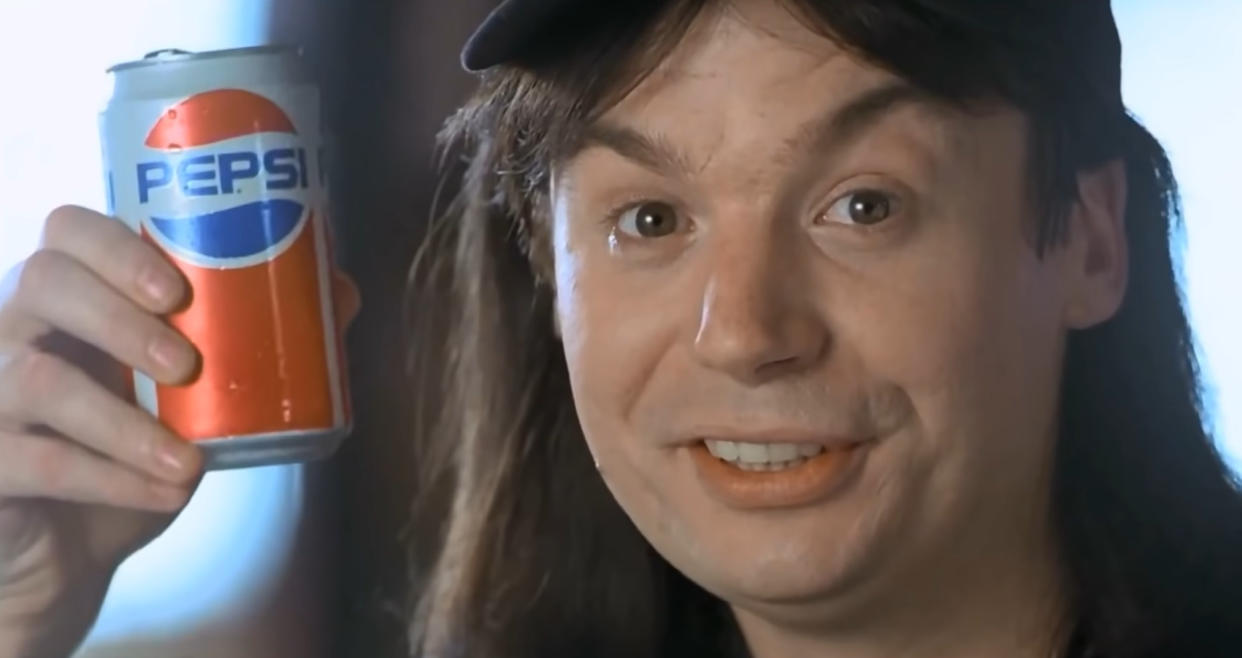
Above all else, the movie business is just that — a business. As much as filmmakers are driven by artistic inspiration and the desire to make something special, the people in the suits behind them are keeping both eyes focused squarely on the bottom line. Box office is important, of course, but a surefire way to make a solid amount of cash is via product placement.
The practice of product placement in cinema dates all the way back to the silent era, with Fritz Lang’s mystery M and the first ever winner of the Best Picture Oscar, Wings, both deploying explicit references to brands, whether paid or unpaid. But product placement has only become more egregious in the years since, with the monetary value of this advertising skyrocketing.
This week, Knives Out director Rian Johnson caused a stir with his claim that Apple won’t allow villainous characters to use iPhones on the big screen due to the importance of product placement to a brand’s image.
The best product placement is organic within the movie, to the point that it is almost invisible. The worst, however, announces itself in very clunky fashion.
Transformers: Age of Extinction (2014)
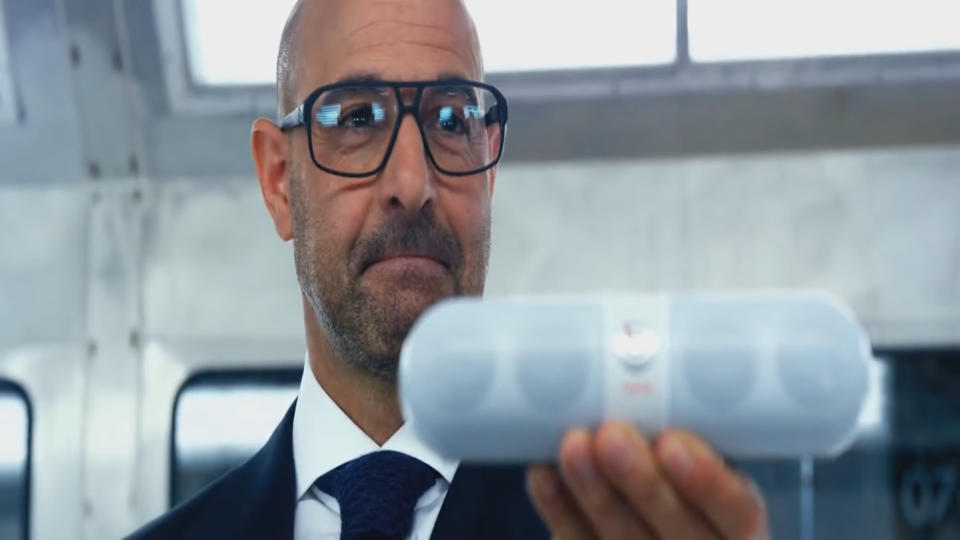
Michael Bay is something of a maestro of blindingly obvious product placement, but it has never been more obvious than in his fourth Transformers epic Age of Extinction — which won an award for its commitment to clunky brand synergy. There are ludicrously prominent nods to Victoria’s Secret and more than 40 other brands throughout the running time. One of the more obvious moments comes when a Bud Light truck bears the brunt of the metal mayhem, shedding its contents all over the street, with luminous blue bottles glinting from every corner of the frame.
Read more: Two new Transformers movies on the way
The most egregious sequence, though, forces Stanley Tucci — one of the world’s greatest character actors — to turn music goods salesman. In a scene in which his bad guy character demonstrates his own Transformers technology, he produces a perfect representation of the Beats Pill speaker, complete with a clunky name-check for the product. Yikes.
Jack and Jill (2011)
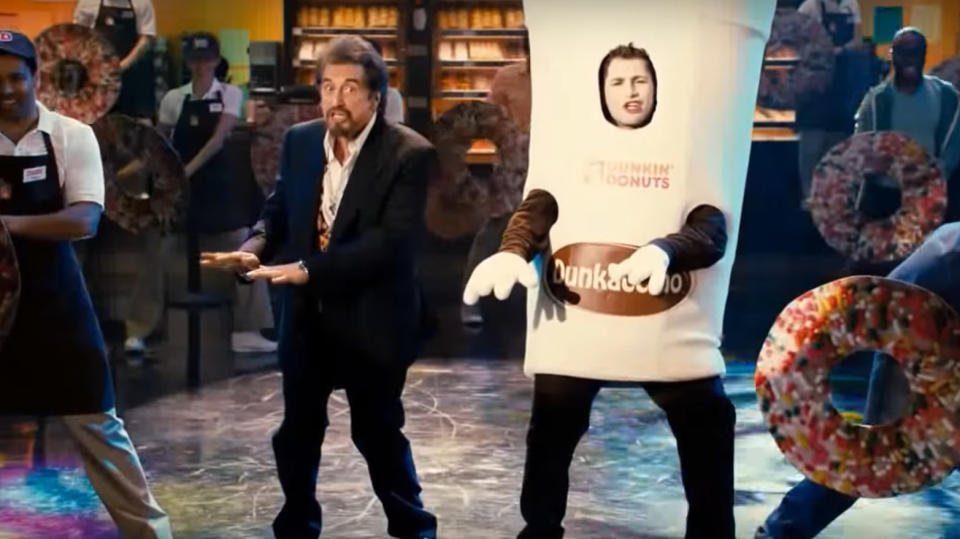
If there’s a second place in the league table of product placement veterans, Adam Sandler would almost certainly occupy it. Jack and Jill is a movie which is guilty of many, many sins — as its record-breaking haul of 10 Razzie Awards would suggest — but its product placement is right up there with its worst flourishes. One scene set in a cinema that featured heavily in the trailers manages to cram half a dozen Coca-Cola logos, carefully placed, in the frame at once.
Read more: Sandler threatens to make bad movie on purpose after Oscars snub
The worst moment, though, comes during the film’s conclusion in which Al Pacino, playing himself, appears in an advert for Dunkin’ Donuts and their new drink — the Dunkaccino. It’s designed as a parody of over-the-top product placement, presumably, but that rings hollow when the rest of the movie is full of the less self-referential kind.
Little Nicky (2000)

Sandler again, this time in a movie released during what we’ll charitably call his 90s/00s heyday. The actor plays one of Satan’s sons and, in one scene, experiences the delights of Popeye’s Chicken. Once he has been talked through how to eat fried chicken, he declares with great aplomb that “Popeye’s Chicken is f***ing awesome”. He later saves the world with a bucket of the same brand’s food.
Read more: Actors who stop people watching movies
Few would say that Sandler’s comedies mark the pinnacle of cinema, but they are a true shining example of how to deliver product placement so ridiculous that it becomes meme-worthy.
Casino Royale (2006)
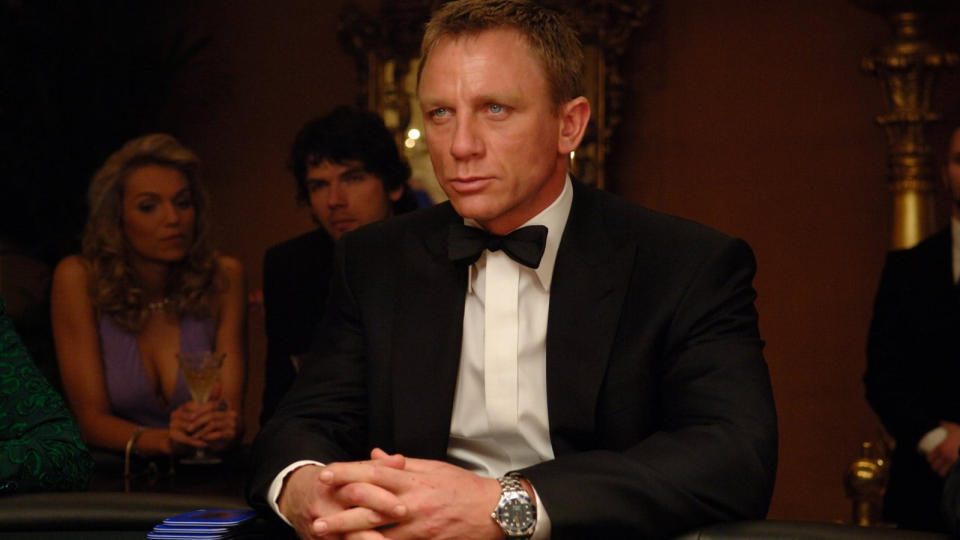
James Bond has a long history of product placement, from the spy’s expensive cars to his fancy suits and array of technology. In 2012’s Skyfall, for example, Heineken reportedly shelled out £28m to be Bond’s new tipple of choice. Daniel Craig himself defended product placement and said that Eon “couldn’t afford to make those movies if we didn’t have those sponsors” and dubbed product placement a “fact of life” for big movies.
Brand synergy was, unsurprisingly, fully present when Daniel Craig took over the lead role for 2006’s Casino Royale, delivering one of the most infamous product placement moments in the franchise’s history.
Read more: Eva Green discusses possible No Time To Die flashback
During one of the early scenes in which Craig spars with Eva Green’s Vesper Lynd, she remarks that he’s part of a breed of “former SAS types with easy smiles and expensive watches”. Looking at his wrist, she asks “Rolex?” and he replies “Omega”. Vesper responds that the watch is “beautiful”, in a scene that could almost have been lifted from an advert.
I, Robot (2004)
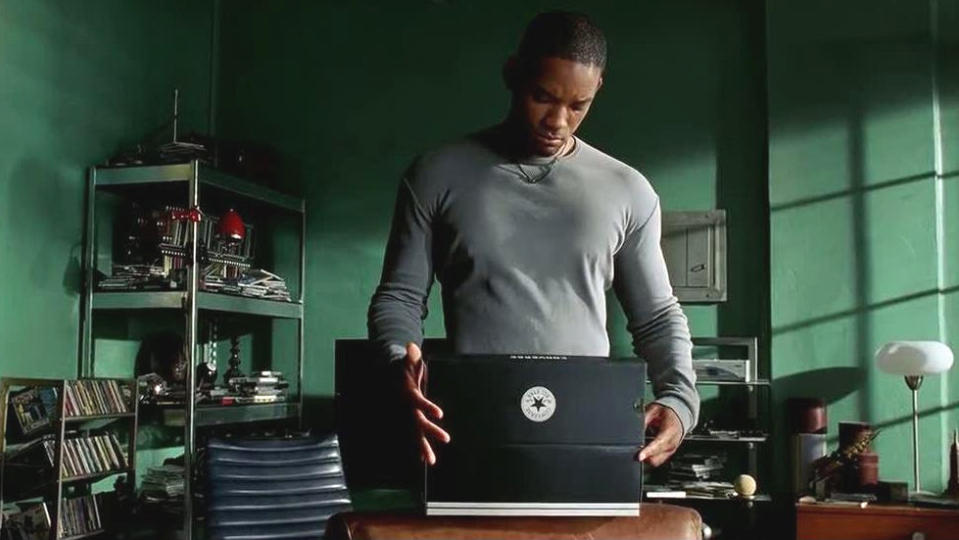
With Will Smith riding high as a box office commodity in the wake of several big successes in the late 1990s, sci-fi thriller I, Robot was a big movie for Fox and a solid $350m (£271m) hit at the box office. It’s little surprise that the movie attracted a major brand endorsement in the shape of a pair of Converse shoes.
Read more: Bad Boys For Life scales box office heights
Smith’s character is seen unboxing the shoes like an enthusiastic teenage YouTuber in an early scene and wears them throughout, with numerous characters remarking on how nice the footwear is. In a heightened near-future sci-fi world, the excitement over trainers is probably a bit much.
Power Rangers (2017)
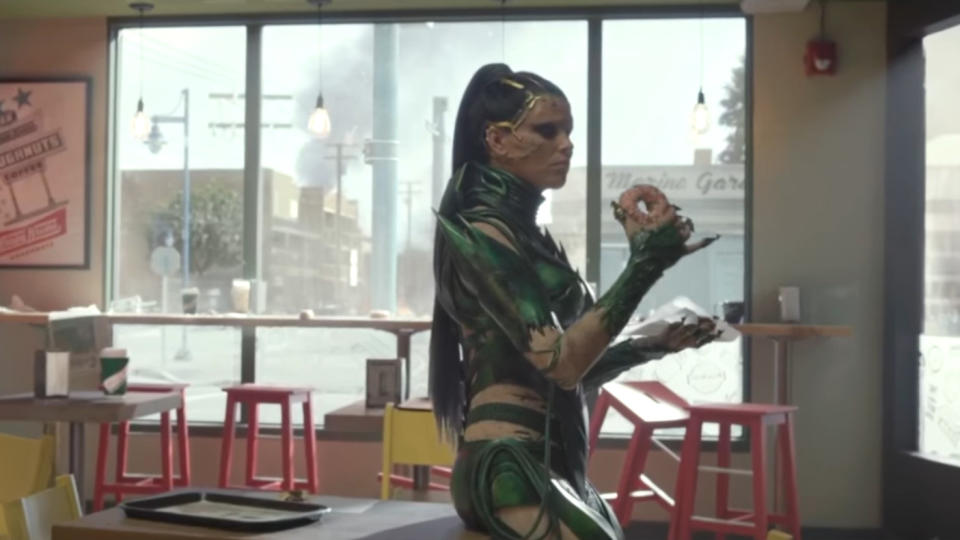
The 2017 cinematic reboot of the Power Rangers went largely unnoticed at the multiplex. It did, however, provide one of the most shocking examples of product placement ever in its repeated references to global doughnut company Krispy Kreme. There was a clear partnership between movie and brand, with lots of tie-in sponsorship around the release of the film.
Read more: Lupita Nyong’o went undercover at Comic-Con as a Power Ranger
According to Mashable, there are 10 scenes in which the brand is mentioned verbally or visually. The climactic action sequence is set almost entirely around a branch of Krispy Kreme and contains a moment in which Elizabeth Banks’ villainous Rita Repulsa actually pauses to sample the produce. Apparently, they don’t have doughnuts on other planets.
E.T. the Extra Terrestrial (1982)

Is there a better vote of confidence for a chocolate than being the snack of choice for everyone’s favourite alien? The Hershey Company certainly reaped the benefits of its association with Steven Spielberg’s family sci-fi classic E.T. the Extra Terrestrial, seeing a 65% bump in its profits after the movie was released. Had the Mars company not rejected Spielberg, it could have been M&Ms that featured so prominently.
Read more: E.T. and Elliott reunite for Christmas ad
There’s nothing subtle, though, about the film’s product placement, with the chocolate’s logo visible often in the storytelling. Elliott even uses the peanut butter candy to lure E.T. into his home.
Mac and Me (1988)
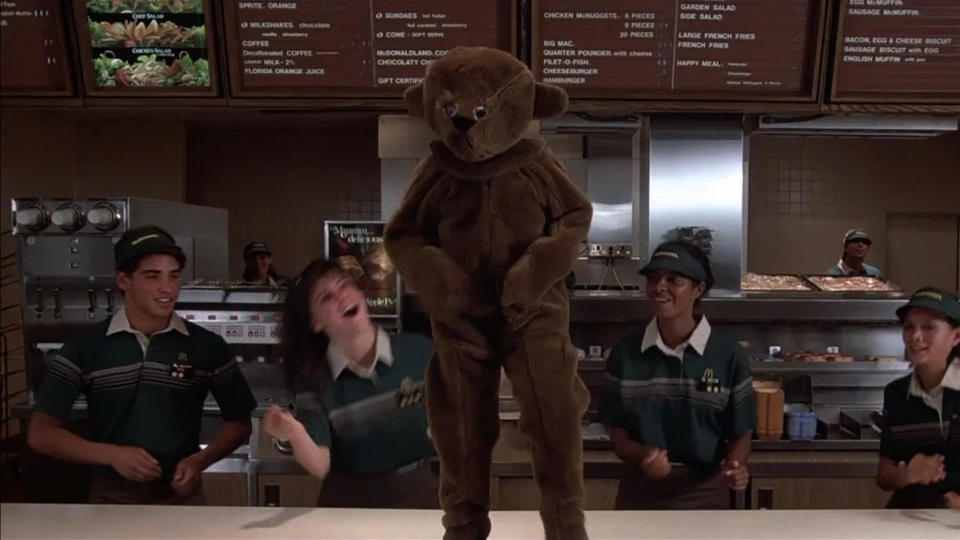
One of the most notorious product placement nightmares in history centres around the movie Mac and Me, itself a pretty shameless attempt to cash-in on the success of E.T. earlier in the 1980s. With massive nods for both McDonald’s and Coca-Cola, the movie was savaged by just about everybody who saw it. Producer R.J. Louis had previously worked on advertising for McDonald’s, but reports that the fast food giant helped finance the movie have been denied.
A major scene at the heart of the movie features the Mysterious Alien Creature (MAC), disguised in a teddy bear suit, joining an uncomfortably lengthy dance party in a McDonald’s restaurant. So prominent was the fast food product placement that Ronald McDonald won the Razzie for Worst New Star thanks to his appearance in the film.
Sex and the City and Sex and the City 2 (2008/2010)

Given the success of brands in the wake of mentions on the popular TV show, the Sex and the City movie was a bonanza for product placement. New Line Cinema reportedly called it “the Super Bowl for women” and at least eight major companies spent big to promote the use of their products in the movie. The sequel was just as big, with the likes of Mercedes-Benz and designer bag website Bag Borrow or Steal keen to grab a piece of the series’ product placement pie.
Read more: Sex and the City 3 would’ve killed off Mr Big
It’s difficult to get past the fact that almost every car in the movie which isn’t a taxi seems to be a Mercedes and the constant corporate decadence is over-powering over the course of both films. Nonetheless, they were both monster hits, with the two movies earning more than $700m (£543m) cumulatively at the box office.
The Internship (2013)
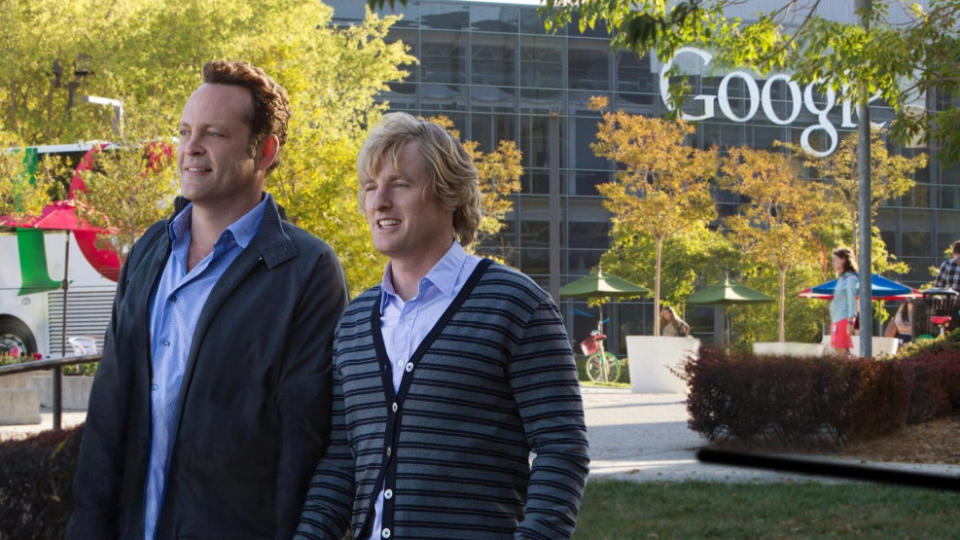
The Internship is a film in which Vince Vaughn and Owen Wilson decide that working at Google is probably loads of fun. It ends with them realising that they were right, and that working at Google is indeed a riot. There’s almost something impressive about a major studio comedy deciding to base itself entirely around bigging up one of the world’s most dominant brands.
Read more: Owen Wilson part of massive cast for Wes Anderson’s The French Dispatch
Although it has been reported that no money changed hands, Google consulted on the project and had a degree of say in how its products were depicted. Anyone who has seen the movie will not be surprised that Google were very happy with the finished story.
The Great Gatsby (2013)

Baz Luhrmann is no stranger to glamour, having directed lavish movies including Moulin Rouge and Romeo + Juliet. In 2013, he tried to one-up his own reputation for glitz with a sparkling adaptation of The Great Gatsby, starring Leonardo DiCaprio as the title character. Gatsby’s parties in the movie feature enormous, human-sized bottles of Moet & Chandon champagne.
Read more: Luhrmann casts his Elvis Presley
The film’s costume and production designer apparently opted for Moet out of a desire for historical accuracy, but the company certainly won’t have complained about the level of publicity they receive in the movie, which places the brand front and centre amid the revellers.
Wayne’s World (1992)

Finally, the most famous parody of movie product placement comes in Wayne’s World. The film debuted in 1992, after the post-E.T. boom in brands co-operating with movie productions. It features a scene in which Mike Myers’ Wayne and Dana Carvey’s Garth spoof the over-the-top excesses of product placement by overtly shilling the likes of Pizza Hut, Pepsi and Reebok while declaring that they will never “sell out”.
Read more: Most memorable Wayne’s World gags
The scene pushes product placement to its logical end point, but still manages to be less ludicrous than some of the earnest brand tie-ins elsewhere on this list. It wasn’t even Wayne’s World’s biggest contribution to a corporate legacy. That would be the iconic Bohemian Rhapsody scene, which sent the record’s sales soaring and forever changed every drunken Queen sing-along into a display of elite-level headbanging.

 Yahoo Movies
Yahoo Movies 
